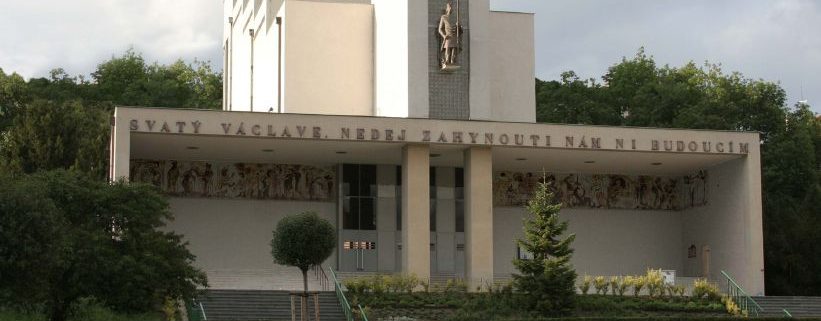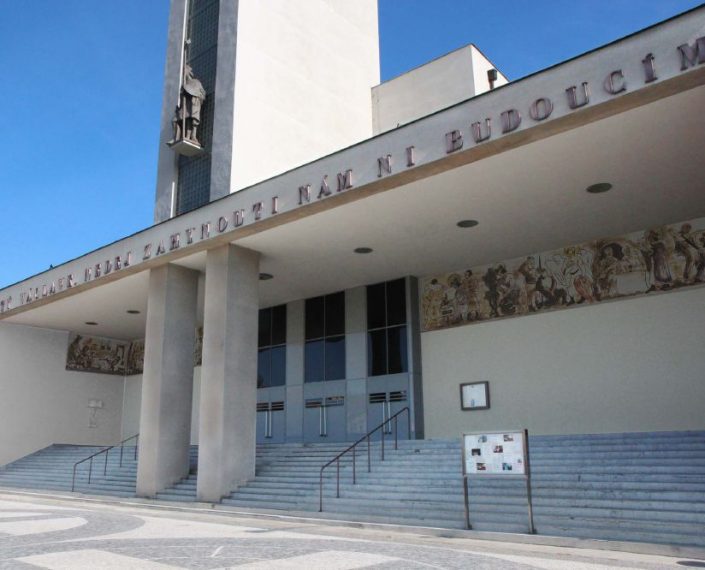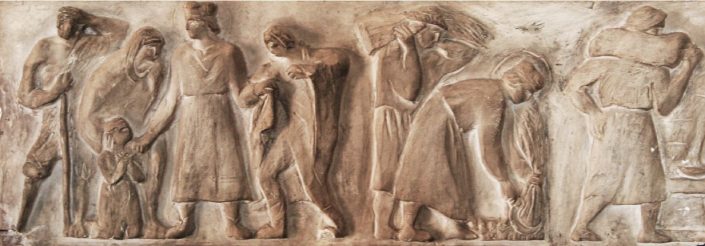Saint Wenceslaus Church in Prague-Vršovice
The completion of the sculptural decor in Saint Wenceslaus Church, which is situated on Čech Square in one of Prague‘s districts called Vršovice, is definitely an interesting task which would significantly contribute to the revitalization of Prague’s avant-garde architecture. This unique sacral building built in the functionalist style has its place not only in Czech, but also in the international architecture of the first half of the 20th century.
Josef Gočár (1880 – 1945), a renowned Czech architect, intended to install a large carved relief section depicting figurative scenes from Saint Wenceslaus’ life above the main entry to the church, and to place a monumental statue of Saint Wenceslaus to the bottom part of the bell tower. He charged Bedřich Stefan (1896 – 1982), a sculptor and one of the members of the inter-war art elite, to do these two tasks.
The Second World War, untimely death of the architect and the subsequent political changes in the country have all made the implementation of Gočár’s plan impossible. Nearly-finished designs of both the statue and of the carved relief in the ratio 1:10 have been preserved as part of Jiří Stefan’s (Bedřich Stefan’s nephew) inheritance. At Jiří Stefan’s request, a 4 meters tall model of the Saint Wenceslaus statue was created by Jan Roith. Thanks to the endeavors of architecture enthusiasts, the parish and the Prague 10 district authority, the bronze statue of Saint Wenceslaus was created according to the extant design and installed in the church in 2010.
The next step should be the completion of the carved relief section above the entry to the church. This relief depicts multiple significant moments from Saint Wenceslaus’ life (his birth, baptism, tonsure, Saint Ludmila’s reign, helping those in need, bread, wine, angels, dinner, death and funeral). Two thirds of the preserved plans and designs of the relief section have already been processed into the individual scenes in the scale 1:10.
Based on Jiří Stefan’s memoirs, we know that Bedřich Stefan and Josef Gočár agreed that this monumental carved relief (2 meters tall and 30 meters long) would be a polychrome one.
The potential completion of the carved relief should be done the traditional way – that is creating the missing third of the relief out of clay and casting it in plaster. The most suitable material to transform it into the final shape is the so-called Romanesque cement. It is a standard long-lasting material which can be casted as well as stone worked.
Similarly to the bronze Saint Wenceslaus statue being funded by sponsors, it would be amazing if we could find the funds necessary for the completion of this extraordinary project as well. The artistic value of Saint Wenceslaus Church would be further increased through the successful completion of this project.







